Musical Sketches – Mozart’s Dirty Little Secret
Mahler did it. Beethoven did it. Even… gasp… Mozart did it. What am I talking about? Sketches. I think we can all agree that these three composers were geniuses. But genius is not enough to create what they created. In this article you’ll find out the secret that the great composers tried to keep hush-hush, and find out how it will give you control over your composing and enhance your self-expression like never before.
“Don’t bother looking at the view – I already composed it.” Gustav Mahler
Musical Sketches from the Masters
You have probably heard the stories of Mozart composing entire works in his head and them putting them down on paper while drunk the night before a performance. But did you know that Mozart actually sketched out some of his works before hand? In fact there are roughly 320 sketches or drafts that survive to this day, covering a substantial portion of his catalogue.
“Yesterday, at Wendling’s I sketched the aria which I had promised his wife, adding a short recitative.” Mozart, in a letter to his father, 1778
Beethoven filled up many sketchbooks with short fragments of his ideas. He would frequently go on long walks and write down the music with furious scribbling, frantically trying to get down his inspiration on paper.
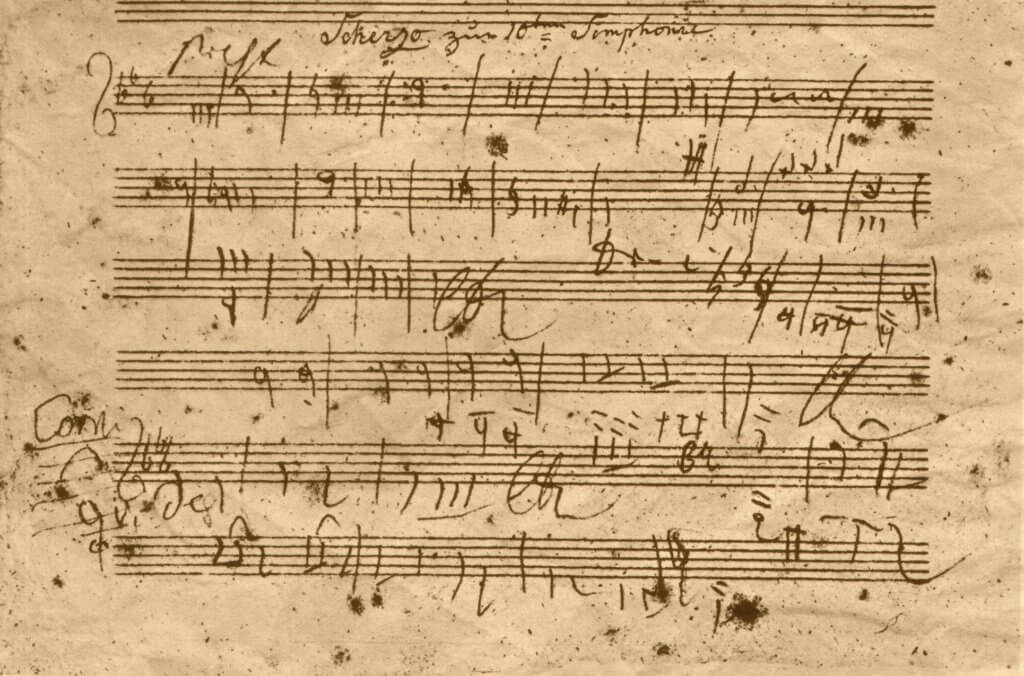
This is actually a sketch for Beethoven’s unfinished 10th Symphony.
The Importance of Sketching Phrases
Sketching is vital because it allows you to capture your music when it is freshly inspired. But it is good to know the the greats had to “form” their ideas first, and didn’t have all of it come in some great flash of genius.
But What Should We Be Sketching?
Ultimately, you can sketch whatever comes to mind. But what if nothing comes to mind? If you hear something in your head, how do you know that you can write it down? Today’s topic will discuss this, and it comes down to understanding musical phrases. If you understand what makes up a musical phrase, how to construct it and what you can do with it, you’ll always be able to turn that inspiration into something useful.
So What is a Musical Phrase?
I like to define a musical phrase as follows.
A short musical statement, that has structural completeness, and is comprised of integrated musical events, which lends itself to being combined with other similar statements.
Let’s break this down, so we have a better understanding. It is key that we’re working off of the same vocabulary.
A Short Musical Statement – 2,4 or 8 Bars
A phrase tends to be 2,4 or 8 bars. But they can be shorter or longer. At faster tempos, they tend to be longer; slower tempos tend to be shorter. For our purposes here, we will start with a phrase of 2 bars, which will make it easiest to understand the concepts.
Structural Completeness
You may have noticed they all feel complete, like they are whole thoughts, and probably would not sound nearly as good had they been divided. This is another important aspect of a musical phrase. Try to imagine the phrase as a single link in a chain.
Several Musical Events
Event is not a word used too often in music. I take the word from Schoenberg’s definition of musical phrase. Basically, we are talking about a motive or motif, although, it also encompasses the non-motivic parts of the phrase as well. We’ll talk more about motives a little later.
Lends Itself to Being Combined
This is key to musical phrases. They are easily combined with other similar musical statements to make larger things like sentences, periods, movements or… even a Symphony. Okay, I am getting ahead of myself. In different music theory books, phrase and it’s related terms – motive, sentence and period – get used in the same context. I like to structure the size as follows. Motive, Phrase, Half-Sentence, Sentence and Period. I’ll discuss the difference between a sentence and a phrase a little later.
There are common schemes to combining phrases. Below is a very common example, basically consisting of the initial phrase in Tonic (I), followed by an imitation in Dominant (V), then short statements of the motive in I and V, followed by a half-cadence.
Creating a Musical Phrase, Step by Step
Creating a musical phrase is not difficult. Anyone can do it, and mostly it comes down to listening. If it sounds “complete,” then it’s a phrase. If you like it, then it’s a good phrase. But, you know that’s not how I do things, so we are going to break it down even more. I promise if you go through these exercises, you will be writing better, more creative phrases. It all starts with an understanding of how to write a coherent, simple melody, which conforms to the underlying harmony.
Step 1: Understand the relationship to melody, harmony and the phrase form
To start off, we will look at a few very simple phrase examples to illustrate a point.
What do you notice about the examples (I will tell you).
- They all outline a very specific harmony
- They have unique rhythms
- They have unique intervals
- They sound like relatively complete structures
These will be the principles that we use to write our phrases.
Step 2: Adding Interest
Once you understand that your phrase must outline a specific harmony, we have to take it a step further. We want to be clear, but just having simple chord tones is not going to cut it, that would get too boring. So how do we expand the melody but still make it clear.
Melody is a complicated topic. Once again, the most important thing is to use your ears. But when those aren’t working here are a few things you can do.
Unaccented Passing and Neighbor tones
Double neighbors and Incomplete neighbors
Anticipation – Anticipating a note from the next harmony during the current harmony
Suspension – Suspending a note from the previous harmony over the next harmony
Free tones (Approached by a leap and resolved by a leap)
Step 3: What is Your Motive?
This is not your motivation for writing. No, this is the unique rhythm or unique intervals or both, that give the phrase a… uniqueness.
A motive is what distinguishes the phrase. One key about a motive, it must be repeated at least once, or else it’s not a motive, it’s just a neat little thing, but not a motive. Here is a really cool phrase from Gustav Mahler, that has two interesting motives. You can hear it played by an orchestra, listen out for it around 0:18 seconds. See where else it appears in the movement.
Step 4: You Complete Me
With the previous three exercises, have seen what goes into a phrase. But for it to sound complete, we have to create what is called a melodic cadence. Melodic cadences tend to have a pause in the rhythm, giving space for a breath, and they usually have definite two note patterns that bring the phrase to a close. A very common pattern, especially in the classical period, is to end your first phrase with scale degree pattern 3-2 or 8-7. And then your second phrase (end of the sentence) with a pattern of 2-1 or 7-8.
We’ll get into these melodic concepts in later posts, so I won’t go over all the details now.
Your Sketches, Phrase Storming, and the Key to Unlocking Your Musical Creativity
I have been busy with initial preparation for the Symphony. Part of me wants to jump right into it, but that would not be wise. The reason is simple. If it is not approached methodically, you can easily get overwhelmed.
My first step in preparation for composing a symphony is a strategy I have affectionately called phrase storming.
Phrase Storming – The act of brainstorming as many musical phrases as possible in a short, specified amount of time.
Before I get into the benefits of phrase storming and how to do it, I want you to hear two of the initial phrases that I have picked as contenders for the Symphony.
These phrases are the ones that I think have the most potential or I just thought sounded good. From these we will begin the process of writing the entire Symphony.
The Benefits of Phrase Storming
- Improve your intrinsic understanding of form and melody
- Help break you out of “composer’s block”
- Get a lot of ideas down on paper, that you can develop or save for later.
- Test your creativity and expand your musical vocabulary
So what is phrase storming?
Effectively, its writing down as many phrases as you can, as fast as you can, with self-imposed constraints.
These constraints may be melodic, rhythmic, time signature, number of bars, harmonic… basically any element of music can be constrained. This helps creativity by releasing your thinking power on to one specific element. Usually, the more constraints, the more creative.
The Most Important Constraint
Time. You have to go fast. Write, and then forget about it until you are done. This takes practice, but it is a great “strength builder.”
My Process for Phrase Storming
- Sit down at the keyboard
- Set the constraints – Time signature is 4/4, Key is D Major, allowed 1 minute per phrase.
- Set goal – Minimum number of phrases is 10, so total time is 10 minutes (you’ll definately want some kind of timer).
- Start composing phrases.
- After time is up, evalutate phrases.
These constraints are just examples, you can set whatever constraints you want.
It is important not to evaluate while you are composing the phrases. Just like “stream-of-thought” writing, you don’t want your brain to get in the way of your imagination. You can evaluate afterwards.
The Next Step
Next week we’ll examine exactly what to do with the phrases you have composed and how they will fit into the big picture. Following that, we’ll start to take a look at the form of a symphony as a whole, as well as each individual movement.
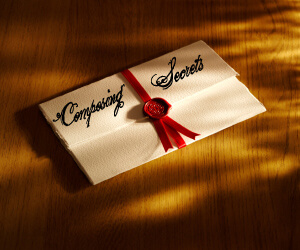





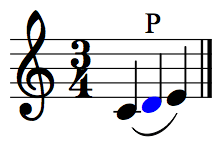
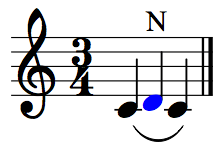
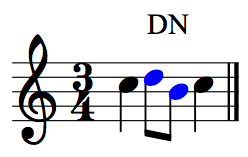







Hi Jon
Just found this site. Nice work. I got my Masters in Composition at Roosevelt University 15 years ago.
I.play jazz,classical guitar and have composed for just about every idiom imaginable.
Thinking of taking these courses as a refresher. You can never learn enough. Beethoven, even in his fifties was trying to refine aspects of his playing and composing according to his letters.
Great site.
Mark Edward’s M.M.
Thanks Mark.
I’m struggling with the size of musical objects. So far, I’ve got the following (smallest first):
1. Melodic cell
2. Fragments
3. Motive
4. Phrase segment
5. Phrase
6. Melody
7. Period
8. Section
Is this correct and complete, or have I missed anything?
My list would be:
Obviously this can be messed with, but I think it’s pretty solid. As you get up to the work/opus level, people use all sorts of terms.
Hi! I am a student learning sound design and composition. I am currently working on creating sound and music for theater and your articles have been incredibly helpful with the composing process. Thank you for sharing your knowledge!
Thanks Amanda.
Hey Jon, What recording device did you use to make the short example audio clips? They are very effective, clean, and easy to access.
I made these with musescore.
Hello, what sources did you find Mozart’s sketches in?
It’s been a while since I wrote this, so I can’t quite remember all my sources. This is a good starting point https://academic.oup.com/em/article-abstract/XX/1/119/391617?redirectedFrom=PDF
Hello. I can’t seem to get any of the recordings to play except the “lends itself to being combined “ one. Seems like a problem with the page. But I enjoyed the read. Thx!
They are working for me. Have you tried a different browser?
I just want to know whether I need a piano or not when do phrase-storming.Should I improvise then record or just write?
The piano is extremely useful but is not the only method of composing. I believe all composers should learn piano at some point. When you finally do, you’ll be wondering why you didn’t learn earlier.
Really enjoyed this post, appreciated how you tried to demystify composition and make it accessible. Your process for phrase storming with constraints is brilliant. Thank you.
Thanks.
Hi Jon!
The picture of Beethoven’ s sketchbook and the Mahler motive is not there.
From which Mahler Symphony is the motive from?
It’s been fixed. Thanks for the heads up.
There is another way of “sketching” down ideas which the masters of old did not have access to: recording yourself. I have found it extremely useful to bring a small voice recorder with me when I’m out on a walk. That way, if inspiration strikes, I can simply hum the idea and have it recorded for playback later. Afterwards when I’m at the keyboard, I can figure out the notes and develop the idea further.
Very true. Although, I’ve been thinking a lot more about audiation and memory, and the importance they play in creating great compositions. I think the effort required to transcribe from your mind without the aid of a recording device feeds back into the composition in unmeasurable ways.
Just what I’m interested in right now 🙂
I think it’s more that Constanze didn’t want us to know. I understand she destroyed 90% of her husband’s sketches after his death. Probably how people got the notion that Mozart wrote down his music without much effort. I understand he said in a letter to his father that he had composed a piece of music, just hadn’t written it down yet.
Interesting, I’ll have to look into that.
This article is a blessing, should have seen far more views.
Thanks.
Great article, Jon.
I love the phrase-storming idea. It’s ironic how constraints (especially time constraints) yield a heightened sense of creativity. I’ve also found this to be true.
One of my composition professors used to encourage me to draw musical sketches–even without notation.
I would draw melodic contour and texture by scribbling shapes on a piece of paper, then label the ideas in plain English so I could make sense of it later.
I found it to be incredibly helpful if an idea came to me while I didn’t have manuscript paper on hand (a sad state of affairs), or simply didn’t have time to flesh out my ideas at that very moment.
Yeah, when I figured out the concept, it was like, “Eureka!” I haven’t done much mapping out ideas a la John Corigliano style, but I do want to experiment with it more in the future.
Your website is awesome! I found it really helpful, especially with organizing the music.
Thanks.
This post is great! Thanks for this one 🙂
I always love the title on this one. 🙂